Church history forms part of the O’Donohoe archive and includes Michael’s impressive 39-pg study of the Church of Ireland in Castleisland. It commences with the division of land following the death of Gerald, 16th Earl of Desmond, in 1583:1
From 1587c onwards, the seigniory of Castleisland was owned by the Herbert family, apart from a large tract of land which had been sold to Patrick Trant in 1683-4. In 1733 the Herberts sold out the lease of the remainder. The new owners or proprietors were Sir Maurice Crosbie, William Crosbie, Edward Herbert, a cousin; John Fitzgerald, John Blennerhasset. A sixth, Richard Meredith, was added in 1734.
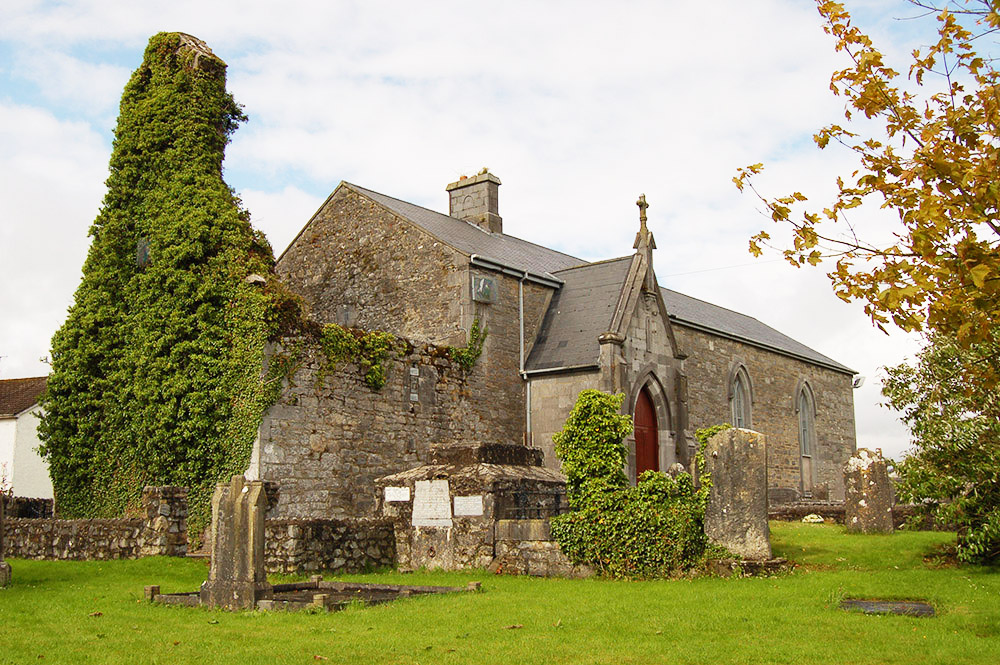
‘The number 6 is interesting’, added Michael, ‘it almost certainly resulted from the fact that, at that time, the town was located at the convergence of six townlands, Bawnluskaha, Tonbwee, Chapel Quarter, Cahereen East, Castleview and Moanmore.’
From the 1730s for a period extending over one hundred years, the next five rectors of Castleisland were ‘a Herbert or a Crosbie. The first of these was Edward Herbert … the only Castleisland man to be rector of Castleisland.’2
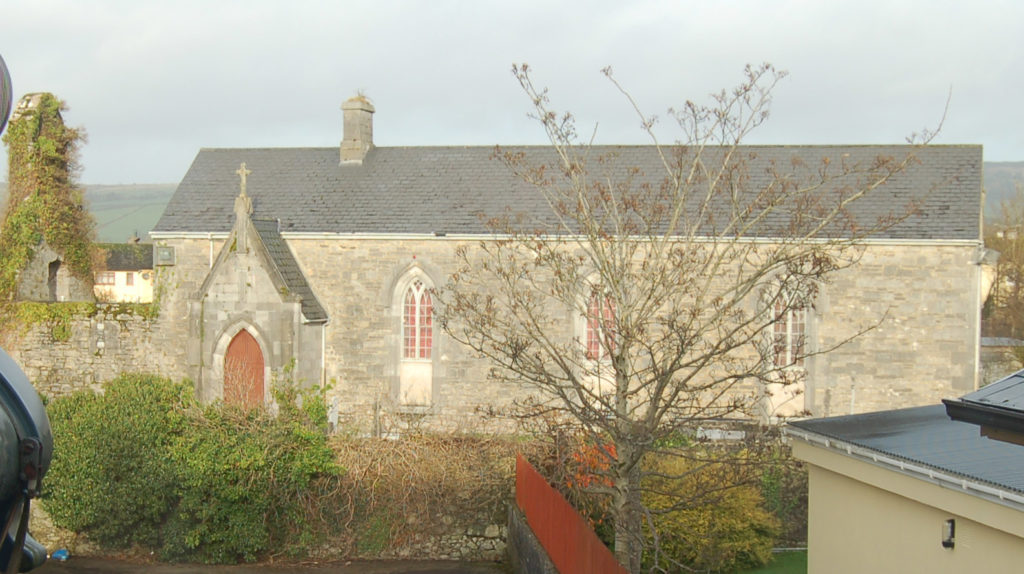
The material also includes a 10-pg account of the history of the Church of Ireland in the parish of Ballincuslane and records of clergy in the parishes of Killeentierna and Dysert. Rev Thomas Herbert, rector of Killeentierna, was father of Arthur Edward Herbert, shot dead on 30 March 1882.3
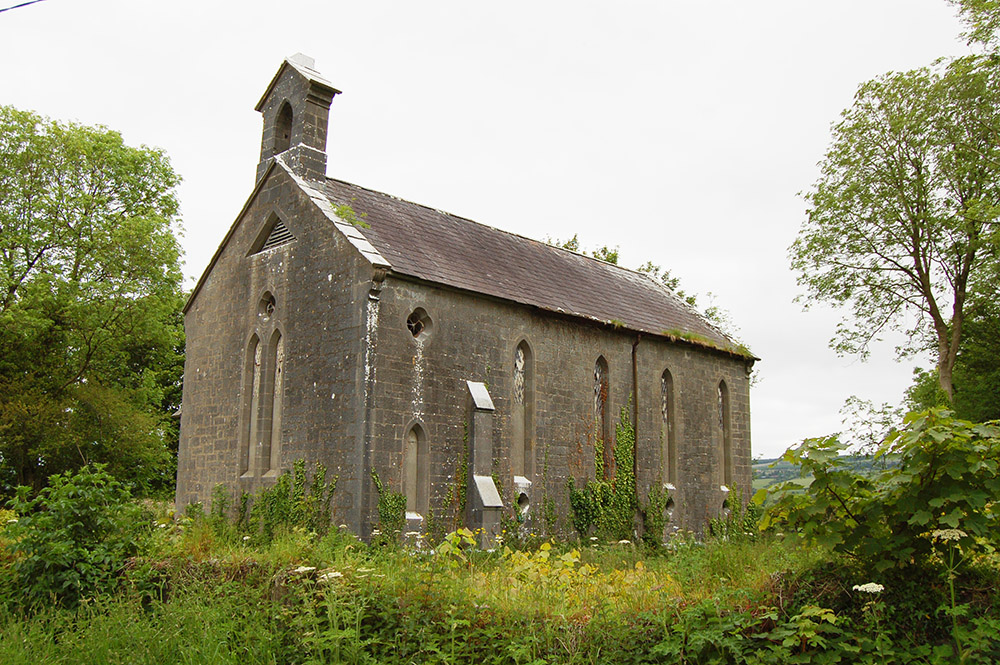
A 19-pg catalogue of 19th and 20th century burial records for Castleisland (Church of Ireland and Roman Catholic, the latter of which documents the burial of T M Donovan in 1950) is of genealogical interest.4
In his study of the Church of Ireland, Michael included an account of the Meredith family of Dicksgrove and Parkmore ‘from their descent from Edward III to their inclusion in the Seigniory.’ He referred to the Taylor & Skinner map of 1777 which illustrated Mount Meredith and to a stone at Dicksgrove dated 1739 bearing the Meredith crest ‘now in the possession of Paddy Fleming of Parkmore’.5
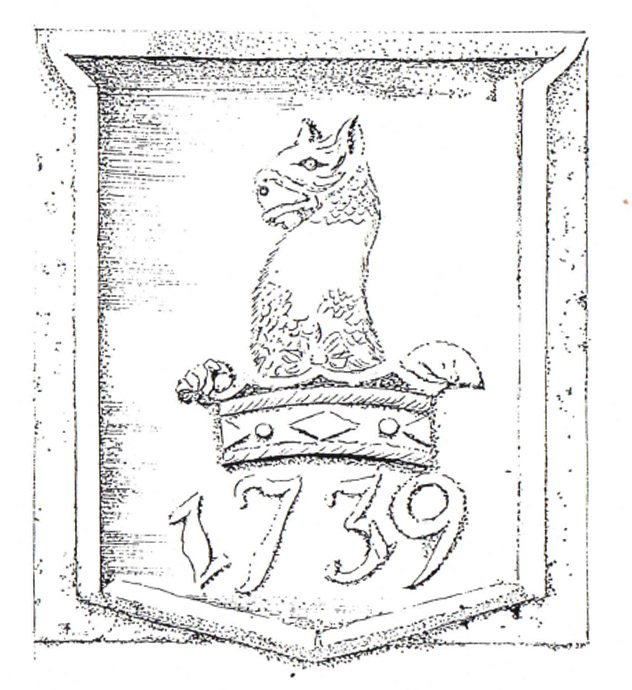
A nineteenth century writer recalled the ‘small castle’ which once stood at Dicksgrove:
The first patriarch of Dicksgrove or rather of Anna, for Meredith had built Anna House and resided in it long before he had purchased the small castle that stood where Dicksgrove House stands now on the side of a heath-grown hill, without tree, garden or wall, when the Samuelses, Cromwell’s subalterns, getting for their arrear of pay the confiscated property of Teigue MacDermod MacFinian Oge. Bailleag of Tiernagoose and Killeentierma (Macarthy) had it sold to the London Hollow Sword Blade Company.6

The writer described how the Merediths, or Ap Merediths, were ‘Princes of Powis for ten centuries and they were connected with the most ancient and the most honourable descents in Wales’:
They were originally seated at Gowross, Montgomeryshire. One of them, Richard, married Anne Browne, an heiress, which caused the quartering of the arms of Browne with those of Meredith.7
‘Lordship on the higher ground’
The name Dicksgrove, formerly Tiernagoose – ‘Lordship on the higher ground or hill’ – was given by the family ‘when the grantee, un-reconciled to it for many reasons, disposed of it by composition to one of the mercantile war companies of 1641, when it was purchased by Meredith’.8
The Merediths were ‘generally regarded as being the best of the settlers in East Kerry’. The generosity of Captain William Meredith was ‘legendary’ and a tale is told of Sean Og, a local poor man who approached Captain Meredith for an elm tree to make a roof and ended up with a heifer.9

The marriage of another Meredith, Stephen John, to Elizabeth Shannon in 1902 resulted in a large family:
One of their sons Richard – popularly known as Dixie – was the last of the Merediths of Parkmore. In the 1940s he married Margaret Fleming of Dulague who taught in Killeentierna National School.
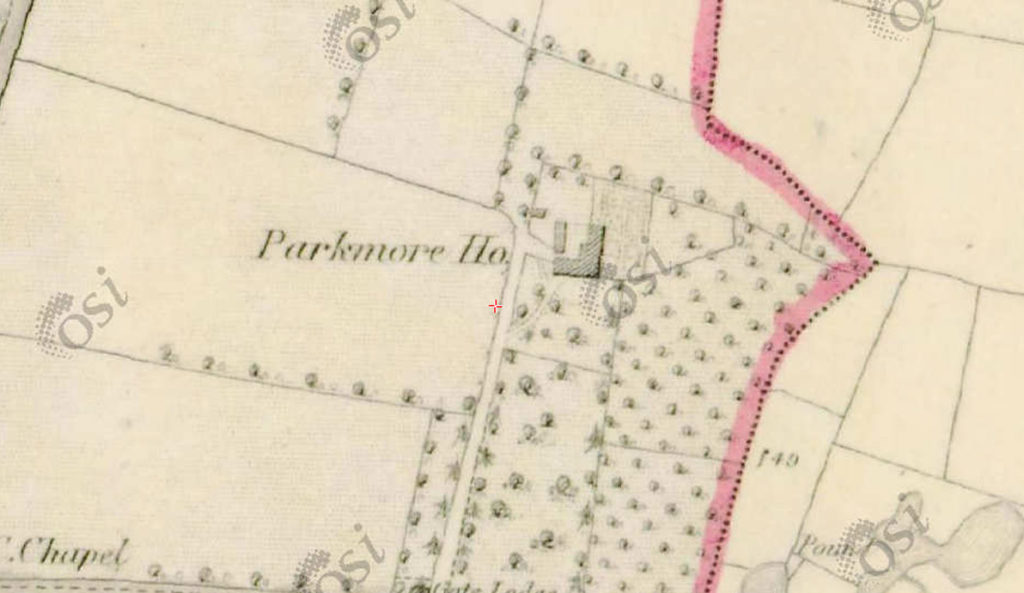
On returning from their honeymoon, the couple were ‘strawed in style’:
The occasion gave rise to the song, Dixie Meredith’s Straw, which was composed by Michael O’Donoghue, son of a local teacher, and sung to the air of McNamaras Band.10
The song begins:
When Dixie got married and his honeymoon was o’er, We heard he was returning by train to Farranfore. We collected a bunch around like custom and like law, And proceeded up to Parkmore, to Dixie Meredith's straw. When we arrived at the lodge gate, the time was scarcely eight, We met Bill Kerins veterans who had not stayed too late, They told us they had got a quid, Tade Geoffrey's eyes did shine, If we get a quid we will have porter whiskey lemonade and wine. 'Twas when we arrived at the swing gate, we heard an awful roar, We never thought that Cromwell lived as near to us as Parkmore. Go back now the way you came up, Tim O'Shinka was heard to say, 'Twas then a gun blazed in the dark and Denny Keaney shouts hurray!
And the chorus:
Fire on them Dick old Stevie said and the shotgun blazed away Breahig was our captain and Darkie the fiddle did play John K Moriarty toot the flute the finest you ever saw And the greatest night in history was Dixie Meredith’s straw.11
The song in full can be viewed by clicking here.
__________________
1 IE MOD/15/15.1. A handwritten note by Jerome Stack concludes the recent history (up to 1996) of the Castleisland church (IE MOD-15-15.5-15.5.3). 2 IE MOD/15/15.1/15.1.21. Elsewhere, in a discrepancy over the date of burial of Rev Arthur Herbert in 1835 (installed rector of Castleisland in 1832) Michael revealed his wry sense of humour when he wrote, 'Died July 28, buried July 27, buried alive' (IE MOD/15/15.1/15.1.23). 3 Herbert, 'an old bachelor, who lived in Killeentierna House now the residence of the parish priest', was 'unpopular even among his own labourers' (IE MOD-15-15.3-15.3.2). 4 IE MOD-15-15.7. Alphabetically arranged, the cover document reveals that the Church of Ireland information, which dates from 1824, was compiled from records given by Rev Canon Warren, rector of St John's Church of Ireland, Tralee, and the Roman Catholic detail taken from the parish register provided by Fr Willie Stack. It is noted that 'The years 1977-1993 are missing from the register' and 'The addresses of the deceased are not written from 1957-1975'. Document includes a sheet of names taken from headstones in 1963 by Alan Golden who drew a detailed sketch map of the graves. The cover document also acknowledges Mrs Mary Tangney, Main St, who supplied names and addresses of some of the people buried in St Stephen's graveyard. Other items in this series include photocopies from publications including Inspiring Stones, Griffiths Valuation and Leslie’s Ardfert & Aghadoe Clergy & Parishes. 5 IE MOD/15/15.3/15.3.6. The account of the Meredith family concludes c1973, 'Paddy Fleming bought Parkmore in 1973 from his aunt Margaret'. It contains anecdotal notes, 'I came to know Dicksie in the late fifties' and a tale is recorded of Dicksie when he encountered the parish priest of Killeentierna who remarked, 'Drunk again today Dicksie' to which Dicksie replied, 'So am I father' (IE MOD-15-15.3-15.3.11). 6 Documents in the collection record the history of this company: 'On the breaking out of the war with France in 1689 a company was erected for the making of Hollow Sword Blades in Cumberland and the adjacent counties for the use of the army. Under its constitution it was enabled to purchase land; the first patentees sold their rights to a body of merchants in London, who purchased forfeited estates in Ireland to the value of £20,000 a year, a great deal being in Kerry. The Irish Parliament ... would not permit this Company to hold the lands in their corporate capacity ... and they were accordingly compelled to sell out. Their holdings in Kerry amounted to 6,351 acres, chiefly in the north of the county' (IE MOD/58/58.4/58.4.5). An additional note states that John Bateman of Killeen (Oak Park) bought in 1702 for £1444 from the Hollow Swords Blade Company the confiscated lands of O'Brennan, Knocknaidra, Tylagh, Rinefieragh, Farrangaleesare, Demeen, Adraville, Mullins, Inchineaimier, Kilsarcan, Ballykintaun, Glanleagh, Caungillarig, Currigh Mills, scartaglenyashe, Carnagibbine, Knock..., Gortacoppul (IE MOD/54/54.1/54.1.6). 7 The author added, 'She was niece of the last Lord Herbert of Cherbury and Castleisland. Richard Meredith was deputed by that nobleman to manage his estates in Ireland – a fair portion of which was settled on him, so as to qualify him to be one of 'The six gentlemen', originally five, of the seigniory of Mounteagle Royal, or Castleisland granted by Queen Elizabeth to Sir William Herbert of St Gillians, as spelt in the Memoirs or Life, by the celebrated Lord Herbert of Cherbury, who at the age of 15 years (Seteste) married Mary, the heiress of Sir William Herbert, when she was aged 21 ... By reference to Richard, third Lord Herbert of Cherbury, we find his issue by Mary, daughter of the first Earl of Bridgewater, four children: Edward, third Lord Cherbury and Castleisland, died 1678, s.p.; Henry, fourth Lord Cherbury and Castleisland, died 1691, sine prole, title extinct and passing to Powis; Frances or Fanny, married W Browne whose only child Anne married Richard Meredith from which union sprang all the Merediths of Dicksgrove; Florence Herbert married Richard Herbert and conveyed the estates. Through this line came the Earls, Marquises and Dukes of Powis, and the Lords Clive by marriage' (Tralee Chronicle, 28 September 1866). 8 ibid 9 IE MOD-15-15.3-15.3.9. The 'Captain's' genealogy is contained in the following: 'Richard Meredith was son of David, of Gawross, in Montgomery, while William Brown, his father-in-law, was collaterally related ancestrally to the Earls of Kenmare. Richard died in 1750, leaving a son and heir, William Meredith Esq of Castleisland and Anna Mohr (within view of Castleisland). He was born in 1704 and was one of the wealthiest commoners in the South of Ireland, having possessed Abbeyfeale and the territory in possession of Mr Ellis, also the estate now possessed by the representatives of John Saunders Esq, also the property now in the possession of Mr Coltsmann Cronin and some others. He married in 1737, Marian, daughter of Maurice Fitzgerald, Knight of Kerry, of Dingle. That lady was one of the sisters so celebrated for creating numerous and influential connections throughout the county. Dying in 1784, William was succeeded by his son Richard, of Castleisland, Anna Mohr, and Dicksgrove. The last named place was planted, built upon, improved, and called after himself, on site of the Bailleagh forfeiture. This Richard, born in 1739 was married in 1770 to Lucy, daughter of Arthur Saunders Esq JP of Currens and Grandville Place, Cork. He died in 1821, leaving his son William, called Captain as commander of the local yeomanry, which he commanded when the murder of three of his brother officers had been perpetrated within Castleisland barracks, while forcibly despoiled of arms in 1798. He had been born in 1772, and he married in 1801 Alicia, daughter of Richard Orpen Esq JP of Ardtully, Glanerough and by her had issue, 1st Richard; 2nd William, who accidentally shot one of his sisters and pined after the shock until he died; 3rd Robert, AM, in orders, Vicar of Alstock, and domestic chaplain sometime to Lord Mounteagle, his kinsman. He is now Rector of Ballincuslane; 4th Marian, called after her aunt who had married Manus Blake Esq JP. Richard Meredith Esq JP of Parkmore and Dicksgrove, the eldest, married first Fanny, daughter of Major Juxon and left issue by that marriage one son, William, who married Fanny, daughter of John Powel of Sandville Esq and they have issue two sons and two daughters. Richard Meredith Esq of Parkmore married secondly Rose Helena, daughter of William Buckle Esq of the Mythe, Gloucestershire and they left issue Richard, the present proprietor of Dicksgrove, and John Robert. The late Richard, born in 1803, died in 1857. He was fond of quoting his motto, Sapere Aude (have courage to be wise)' (Tralee Chronicle, 28 September 1866). 10 IE MOD/15/15.3/15.3.10. 'Five hundred years ago the walls of Knappogue Castle resounded to the feasting and merriment of McNamara and his band of revellers. The original McNamara's band. McNamara was the lord of stately Knappogue. When he threw a party, it went on for days' (Irish Independent, 13 August 1976). See also McNamara's Band by Willie W Gleeson in The Old Limerick Journal. Authorship of Dixie Meredith’s Straw is also claimed by descendants of Cornelius O’Rourke whose niece, Lynn O’Connor, contacted the O’Donohoe Collection in August 2017 following family history research in Currow. She advised that the parents, grandparents and perhaps great grandparents of her uncle (and her mother) were in the service of the Merediths of Dicksgrove. Cornelius O’Rourke, who also composed The Big Flood, a song which recorded events of Sunday 9 and Monday 10 November 1941 when the village of Currow was evacuated and three bridges at Currow, Ballybeg and Gaddagh destroyed, died in London in 1982 at age 62. 11 IE MOD/15/15.3/15.3.18



